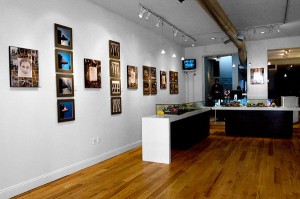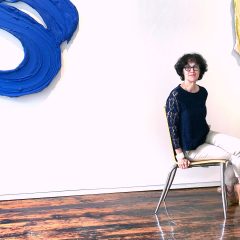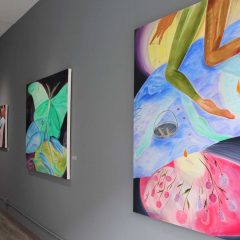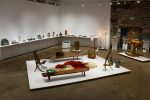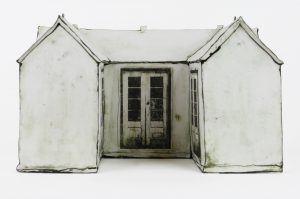Four Blocks Square, on view at Ven and Vaida Gallery through May 31, is the result of a yearlong collaboration between Judy Breslin and Anthony Latess. Like their exhibition, Some People’s Lives from 2009, this project also involves community engagement. However, in this new collaboration, each artist produces a distinct body of work. Together, they conceived the project’s framework, with each artist working within the same designated area of historic Old City. Running from Race to Walnut (North to South) and 5th to Front (West to East), the project encompasses a sixteen block area.
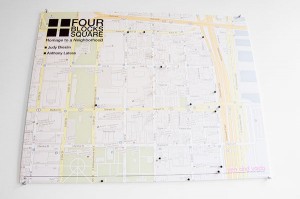
Through their project, Breslin and Latess examine the changes and constants found within the gallery’s neighborhood. Judy Breslin creates multimedia collages that honor neighborhood fixtures. Each collage includes a sketch of an Old City denizen.
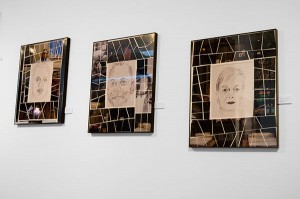
The artist’s quick mark-making reads as a fleeting impression, as if each image was drawn from memory. The works are titled numerically so the person remains anonymous to the casual observer. Framing the drawings are shiny photograph shards — of locations from the person’s life — that act as a mosaic tile framework for the drawings. The mosaic effect lends a sense of completeness and importance to each sketched image. Pictured are neighborhood business owners from a hair salon, a newspaper stand, a bakery, and others. By examining these photographs, the role each person plays in the community can be better understood and appreciated.
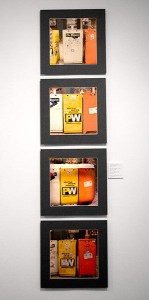
While Breslin’s work focuses on the familiar, the work of Anthony Latess documents the changes that occur over the course of a year. Latess began photographing various neighborhood locations last summer. He then re-photographed these locations in the fall, winter, and spring. Each photograph is titled with a five-digit number, the day of the week, and the date it was taken. Using this format, the title does not provide information about what was photographed. Instead, the act of photographing and the passage of time are reinforced. In photographs 38001-38004, Latess documents three newspaper stands.The four photographs corresponding to each season are hung one on top of the other, allowing for easy comparison. From one season to another, the lighting is distinct, while the presence of snow makes winter highly recognizable. With a closer examination of his photographs, more changes become apparent. From photograph to photograph, more stickers become adhered to the newspaper stands.
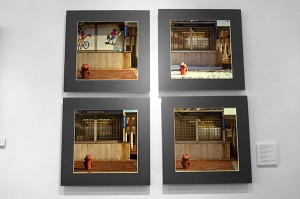
It is this reconsideration of the familiar that interests both Breslin and Latess. The limited area that the project closely observes could be replicated in any neighborhood. By providing this model, Breslin and Latess force us to think about the changing conditions and constants that go unrecognized.
